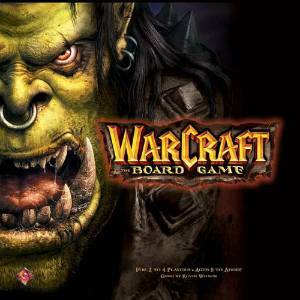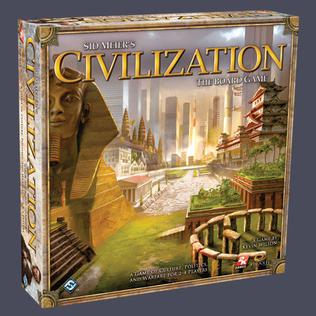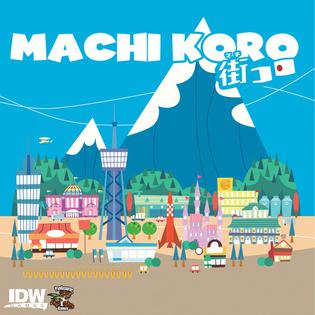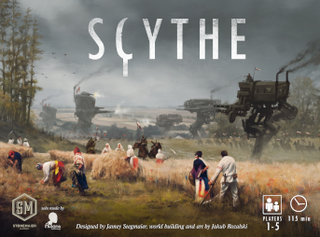
4X is a subgenre of strategy-based computer and board games, and includes both turn-based and real-time strategy titles. The gameplay generally involves building an empire. Emphasis is placed upon economic and technological development, as well as a range of military and non-military routes to supremacy.

El Grande is a German-style board game for 2-5 players, designed by Wolfgang Kramer and Richard Ulrich, and published in 1995 by Hans im Glück in German, by Rio Grande Games in English, and by 999 Games in Dutch. The game board represents renaissance-era Spain where the nobility fight for control of the nine regions. El Grande was praised for its area-control mechanism, and was awarded the Spiel des Jahres prize and the Deutscher Spiele Preis in 1996. Following its release, several expansions and an alternative version were published.
In tabletop games and video games, game mechanics are the rules or ludemes that govern and guide the player's actions, as well as the game's response to them. A rule is an instruction on how to play, a ludeme is an element of play like the L-shaped move of the knight in chess. A game's mechanics thus effectively specify how the game will work for the people who play it.
StarCraft: The Board Game, published by Fantasy Flight Games, is a game inspired by the 1998 computer game StarCraft. Players take control of the three distinctive races featured in the video games, the Terrans, the Protoss, or the Zerg, to engage in battle across multiple worlds in order to achieve victory. Each of the three races features a fairly different playing style. A prototype of the game was shown in BlizzCon 2007, with pre-release copies sold at Gen Con 2007 and Penny Arcade Expo 2007. It was publicly released in October 2007.
Civilization: The Card Game is a card game designed by Civilization IV lead designer Soren Johnson, based on Civilization IV. It was developed in 2006 by Firaxis Games, as a bonus in the Sid Meier's Civilization Chronicles boxed set, and is not available independently.

Age of Mythology: The Boardgame is a board game created by Glenn Drover based on the video game Age of Mythology. It was released in 2003 by Eagle Games. Up to four players may play the game, but extra parts may be purchased from Eagle Games to allow eight players to play.
Glenn Drover's Empires: The Age of Discovery is the first of the Glenn Drover's Empires board games, created by Glenn Drover.

Warcraft: The Board Game is a board game adaptation of the Warcraft series of computer games, created by Kevin Wilson and released in 2003 by Fantasy Flight Games. It takes elements primarily from Warcraft III: Reign of Chaos, but also incorporates elements from Warcraft III: The Frozen Throne.

7 Wonders is a board game created by Antoine Bauza in 2010 and originally published by Repos Production. Three decks of cards featuring images of historical civilizations, armed conflicts, and commercial activity are used in the card drafting game 7 Wonders. The game received critical success upon its release, and won numerous awards, including the inaugural Kennerspiel des Jahres connoisseurs' award in 2011.

Through the Ages: A Story of Civilization is a board game for 2–4 players designed by Vlaada Chvatil and published by Czech Board Games in 2006. Its theme is the development of human civilization and the players determine the progress of their own civilization in different fields including culture, government, leadership, religion and science. The game won multiple awards including the International Gamers Awards in 2007 and Game of the Year in Poland in 2010, where it was published as Cywilizacja: Poprzez Wieki.

Sid Meier's Civilization: The Board Game is a 2010 board game created by Kevin Wilson based on the Sid Meier's Civilization series of video games and published by Fantasy Flight Games. While the previous board game based on Sid Meier's Civilization, published by Eagle Games in 2002, was based on Civilization III, the 2010 version takes its primary inspiration from Civilization IV. Its expansions, Fame and Fortune and Wisdom and Warfare, also began to incorporate concepts derived from Civilization V.

Machi Koro is a tabletop city-building game designed by Masao Suganuma, illustrated by Noboru Hotta, and published in 2012 by the Japanese games company Grounding, Inc. Players roll dice to earn coins, with which they develop their city, aiming to win the game by being the first player to complete a number of in-game landmarks. Machi Koro has been published in eleven languages, with the U.S version being published by IDW Games and Pandasaurus Games.

Scythe is a board game for one to five players designed by Jamey Stegmaier and published by Stonemaier Games in 2016. Set in an alternative history version of 1920s Europe, players control factions that produce resources, develop economic infrastructure, and use dieselpunk combat mechs to engage in combat and control territories. Players take up to two actions per turn using individual player boards, and the game proceeds until one player has earned six achievements. At this point, the players receive coins for the achievements they have attained and the territories they control, and the player with the most coins is declared the winner.

Charterstone is a board game for 1-6 players designed by Jamey Stegmaier and released by Stonemaier Games in 2017.Players work together over a twelve game campaign to build a village, while simultaneously competing to win each game, and ultimately win the campaign. Chartersone was designed as a "legacy board game" meaning that each game played influences, or leaves a legacy, for subsequent games within a larger campaign.

Wingspan is a board game designed by Elizabeth Hargrave and published by Stonemaier Games in 2019. It is a card-driven, engine-building board game in which players compete to attract birds to their wildlife reserves. During the game's development process, Hargrave constructed personal charts of birds observed in Maryland, with statistics sourced from various biological databases; the special powers of birds were also selected to resemble real-life characteristics. Upon its release, Wingspan received critical and commercial acclaim for its gameplay, accurate thematic elements, and artwork. The game also won numerous awards, including the 2019 Kennerspiel des Jahres. Several expansions and a digital edition have been subsequently published.
The Crew: The Quest for Planet Nine is a board game for 3–5 players designed by Thomas Sing and released in 2019. In The Crew, a trick-taking cooperative card game with 50 missions, players aim to win tricks based on their task cards, but can only communicate limited information on their cards. Upon its release, The Crew received critical success and won numerous awards. A sequel, The Crew: Mission Deep Sea, was released in 2021.

Pax Pamir is a board game originally designed by Cole Wehrle and Phil Eklund, released in 2015 by Sierra Madre Games. Its second edition was solely designed by Wehrle and published in 2019 by Wehrlegig Games. It concerns the Russian, British, and Durrani empires struggling for dominance in Afghanistan, with players assuming the role of local leaders. Pax Pamir received positive reviews upon its release and was nominated for several awards.
Viticulture is a worker placement board game published by Stonemaier Games in 2013. The game's design was crowdfunded via a campaign on Kickstarter, with the concept of players building an Italian vineyard. Upon its release, Viticulture received praise for its engagement, but its luck was critiqued. Several expansions and reprints were later released.
Dune Imperium is a 2020 board game designed by Paul Dennen and published by Dire Wolf Digital. In the board game, which is set in Frank Herbert's Dune universe, players use deck-building and worker placement to gain alliances with factions and combat to earn victory points. Upon its release, the game was nominated for several awards, including the Kennerspiel des Jahres.

Wyrmspan is a board game for one to five players designed by Connie Vogelmann and published by Stonemaier Games in 2024. It is a card-driven, engine-building board game in which players compete to excavate labyrinths and entice dragons to the sanctuary of their caves. Based on the acclaimed board game Wingspan, Wyrmspan is themed around dragons instead of birds and hosts slightly more complex game mechanics. Upon its release Wyrmspan received widespread positive reviews and achieved the largest single-day product sale quantity in Stonemaier Games history.













